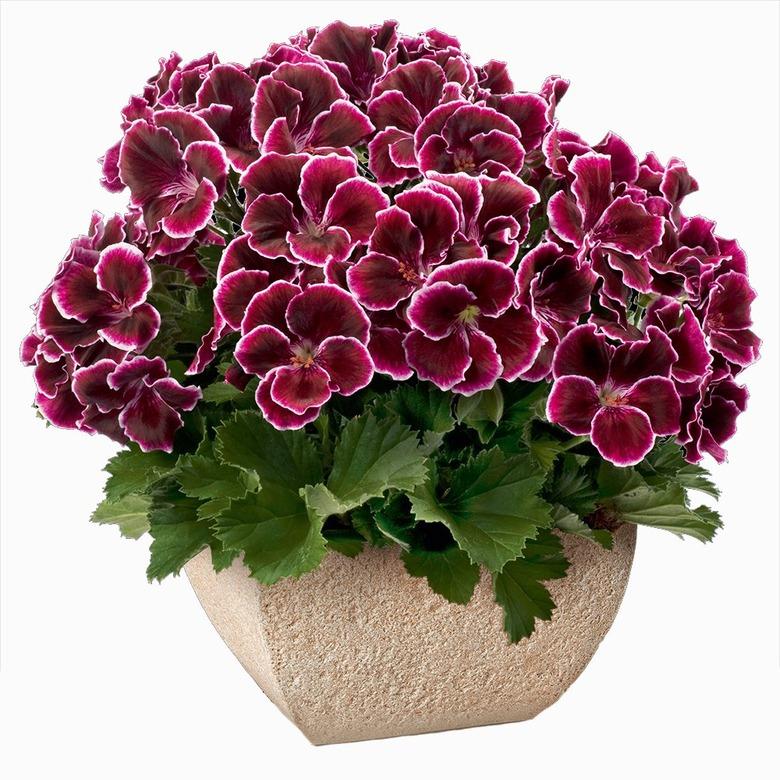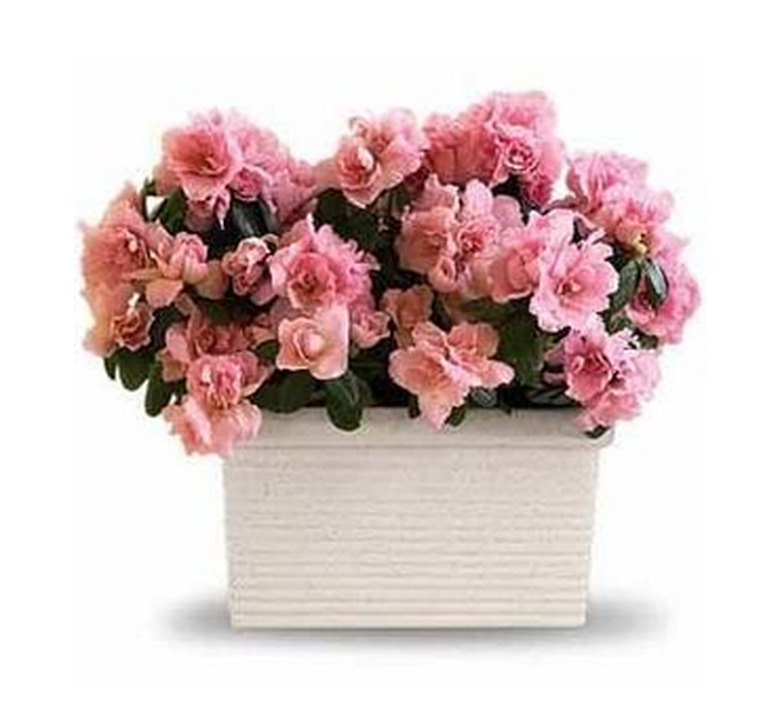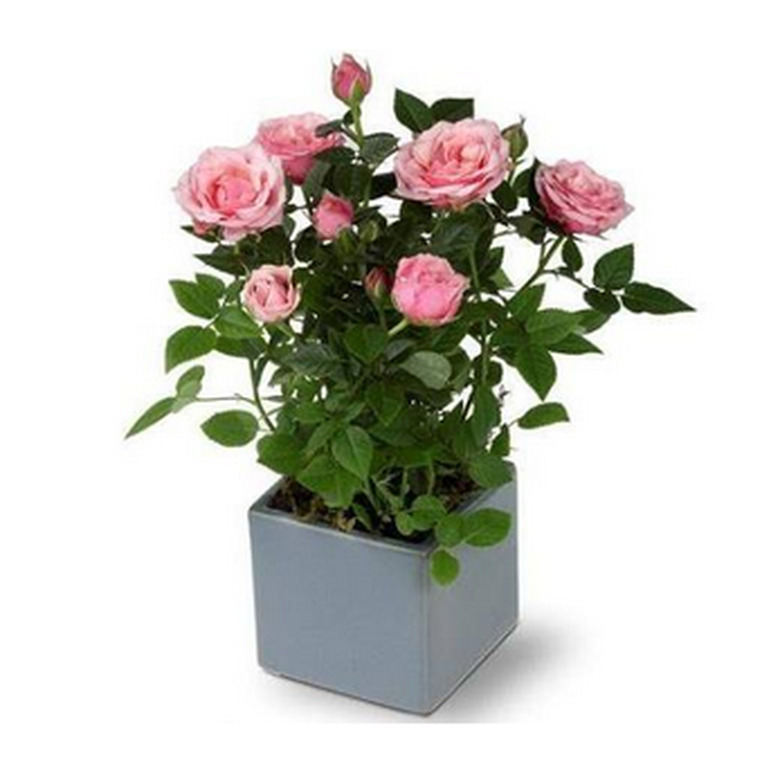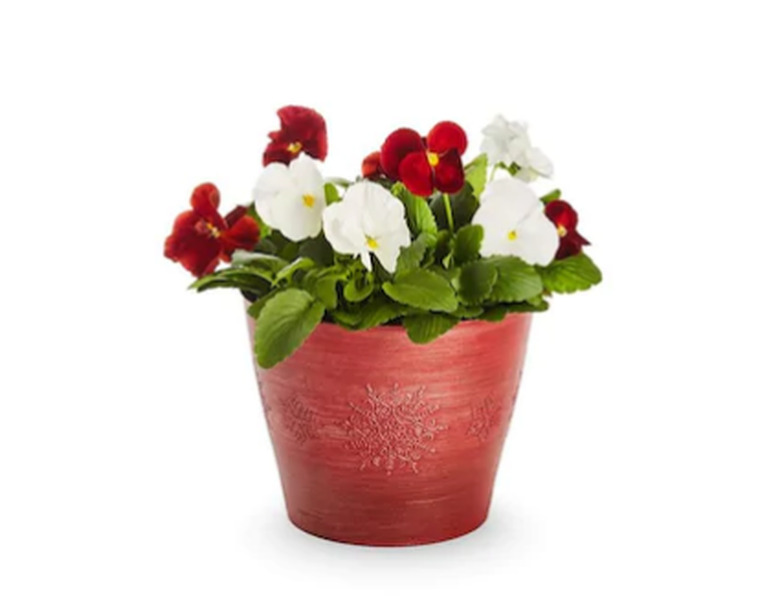Curiously, This "Salt" Is Good To Put On These Plants
There's a lively debate going on in this nation with folks who feel passionate on either side. (No, we aren't referring to politics.) This controversy is about the effect of Epsom salt on plants. Some claim that this substance is almost a cure-all for plants, a nutrient supplement that makes the leaves lush, increases flowering, keeps pests and diseases at bay, and ups the rates of seed germination. Others think the entire thing is a hoax.
Anyone who has ever soaked their tired feet in hot water with Epsom salts already knows that this product has some oomph. Epsom salt is not actually salt at all, but hydrated magnesium sulfate from mineral deposits found in the water in Epsom, England. Plants need magnesium to utilize nitrogen, sulfur, and phosphorus. This means that Epsom salt will help plants grow and thrive, even if it doesn't fulfill all of the many promises bloggers make about its magic. What plants can use Epsom salt? Here's a short list.
Azalea/Rhododendron
Azaleas are one type of rhododendrons and can be grown as houseplants or in the backyard. Gardeners love them for their glossy leaves and bright, frothy blossoms. They are a focal point in any room when they are blooming. While you can find all kinds of rhodies, including some that grow to the size of a small tree, you'll want to pick an indoor (or "greenhouse") azalea for indoor purposes. All azaleas sold as indoor container plants fall into this category. These plants can suffer from a magnesium deficiency, so keep your eye out for the leaves yellowing between the leaf veins. That's when you'll want to use Epsom salts.
Epsom salt tips:
Only use Epsom salts on azaleas and rhododendrons when the leaves are yellowing, signalling a magnesium deficiency. Create a drench using a few tablespoons of Epsom salts and 1 gallon of warm water. Use this to water the plants.
Plant care tips:
- Azaleas are understory plants in nature, so place them in cool, filtered sun, never direct sunlight.
- Don't crank the heater up, since houseplant azaleas thrive when the temperature is between 60 and 65 degrees Fahrenheit.
- Water enough to keep the soil constantly moist. Never let the plant dry out.
- Occasionally dunk the container into a bathtub or sink filled with water, then let it drain.
- Only fertilize when flowering is
complete.* Encourage reblooming by offering more light and
an all-purpose liquid fertilizer. Place it in a shaded area when theweather warms, then leave it outside in 40 to 50 degree temperature from
November through January. The blooms set during this chillingtime.
Rose Plant
If any houseplant will benefit from Epsom salt, it's roses. Testing done by the National Gardening Association determined that Epsom salt had the greatest impact on the growth of tomatoes, peppers, and ... roses! There are some cultivars developed specifically for indoor use, such as miniature roses, which are also incredibly popular as houseplant gifts. You can find them across the rainbow spectrum of shades and many sizes. Indoor roses bloom prolifically when the daylight hours are long.
Epsom salt tips:
It is easier for a plant to intake the magnesium in Epsom salts if you dilute it in water. Use between 2 tablespoons of Epsom salt per gallon of water if you are using it every month; half that amount if you want to use it twice a month.
Plant care tips:
- Give your rose a site in a south facing window with at least six hours of sun per day.
- Use well-draining potting soil as well as a container with ample drain holes.
- Dig into the soil with a finger. If it's dry 1 inch down, water generously.
- Use a balanced houseplant fertilizer. Feed your roses every month in fall and winter, and twice a month in spring and summer.
Pelargonium/Geranium
Who doesn't love a geranium? Colorful, fragrant, and easy to grow, pelargoniums are garden favorites. They resemble wild geraniums and are often mistakenly termed geraniums and sold under that name. These geranium lookalikes make wonderful houseplants and, unlike geraniums, usually fill the room with their sweet fragrance. If you keep the pelargonium houseplant in a sunny location, it will bloom and rebloom all year long.
Epsom salt tips:
It's not one-and-done when you use Epsom salt to assist a geranium. When the leaves yellow, the plant is low in magnesium and Epsom salt is the easiest way to add this nutrient. Container plants need regular applications since they quickly deplete the magnesium in their soil. Mix Epsom salts in water and irrigate ever few weeks.
Plant care tips:
- Use well-draining soil and a container with adequate drain holes.
- Place in a site that gets at least four hours of sun.
- During the growing season, water thoroughly when the top of the soil dries out.
- During the winter, geraniums slow down their growth. Water much less, always keeping the root area somewhat moist.
- Clip off faded blossoms to encourage blooming.
- Fertilize every two weeks during the growing season, using a water-soluble fertilizer at half strength. No fertilizer in winter.
Pansies
Pansies are the happiest flowers, with their heart-shaped, overlapping petals appearing for all the world like joyful little faces. And they come in a wide range of vivid colors and varying patterns. Pansies are just as easygoing as they are cheerful, and they will grow indoors in almost any container. Or plant pansies in a hanging basket in front of a window. For beautifully healthy pansies that are loaded with blooms, many gardeners rely on Epsom salt.
Epsom salt tips:
While you can make a mixture of Epsom salts and water and pour it in the plant soil, it is sometimes easier to put that mixture in a plant sprayer. Mist on the pansy leaves every few weeks and the plants will uptake the magnesium through the leaves.
Plant care tips:
- Pansies need well draining soil and a pot with adequate drain holes. Left to grow in wet soil, they will die.
- But do provide your pansy plants regular irrigation. Check the soil by inserting a finger a couple of times a week and offer an inch of water if it's dry.
- Don't let pansy plants sit in standing water.
- In flowering season, fertilize every three or four weeks.
- Deadhead wilted blossoms to encourage new flowers.
References
- Gardens All:Epsom Salt for Plants and People
- Nature Bring: How to Use Epsom Salt in the Garden
- SF Gate: Epsom Salt
- White Flower Farm: How to Grow Roses as Houseplants
- SF Gate: Rhododendrons and Epsom Salts
- Garden Guides: Geraniums and Epsom Salts
- Old Farmer's Almanac: Geraniums
- Epsom Salt Council: 6 Ways to Use Epsom Salt for Gardening
- SF Gate: What Minerals Do Pansies Require?
- The Old Farmer's Almanac: Pansies



